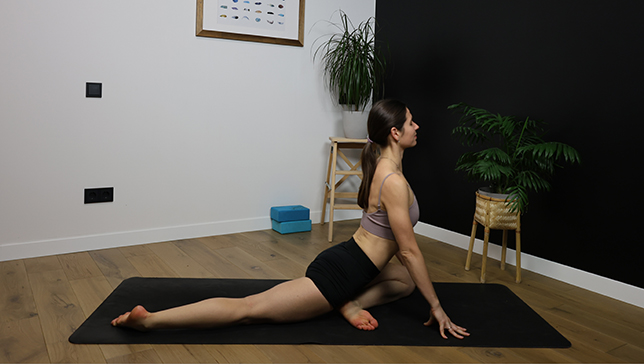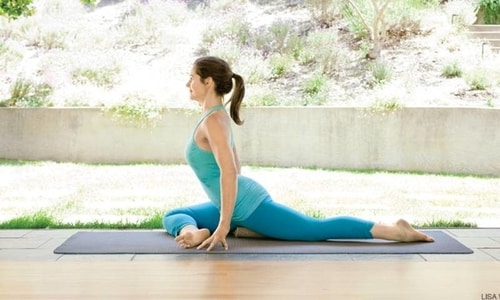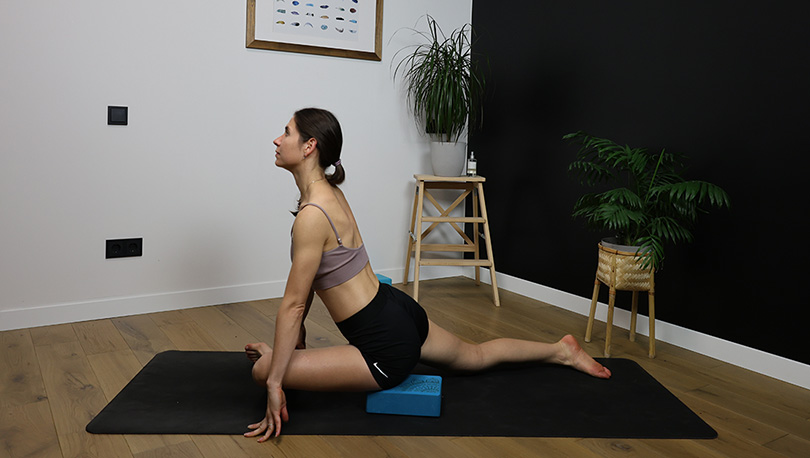Half Pigeon Pose - Eka Pada Rajakapotasana

Contents
Half Pigeon Pose, or Eka Pada Rajakapotasana in Sanskrit (eka, meaning “one,” pada, meaning “foot” or “leg,” raja, meaning “king,” kapota, meaning “pigeon,” and asana, meaning “pose.”) is named after a great yogic master Kapota.
Half Pigeon Pose is a challenging pose and comes under the category of Intermediate Level Poses. This asana helps practitioners to better open their hips, improve their backbend and stretch their torso preparing the whole body for more complex poses like Eka Pada Rajakapotasana A and B.
Pose Detail
- Body Position: Arm & Leg Support, Backbend Yoga Poses, Seated Yoga Poses
- By Type: Chest Opening Yoga Poses, Flexibility Yoga Poses, Hip Opening Yoga Poses, Shoulder Opening Yoga Poses, Strengthening Yoga Poses
- Difficulty: Intermediate
- By Benefit: Yoga Poses For Stress Relief
Step-by-Step Instructions
Benefits and Contraindications
Stretches the entire front of the body, the ankles, thighs and groins, bdomen and chest, and throat.
Stretches the deep hip flexors (psoas)
Strengthens back muscles.
Improves posture.
Stimulates the organs of the abdomen and neck.
High or low blood pressure
Migraine
Insomnia
Serious low back or neck injury
Photo poses in different angles

Tips
- This can be an intense stretch on the outer hip. Keep your right foot close to your left hip to start with. The more your shin is parallel with the front of the mat, the more intense the hip opener will be.
- If your forehead doesn’t reach the mat you can make fists with your hands and stack them on each other then rest your forehead on your hands, or use a block.
- You can also stay up higher, resting on your elbows or hands, just remember not to slump in the shoulders – keep the base of the neck soft.
Modafincations
The most straightforward way to enhance comfort and ease in Pigeon Pose, particularly when dealing with tightness or limited mobility in the hips and thighs, is to utilize some form of support beneath your hips. A cushion or yoga block is an excellent choice for this purpose.
Simply position the support beneath the hip that cannot fully rest on the ground. This enables you to safely distribute your weight into your hips while accommodating your individual mobility level. To achieve this, position the block at either its low or middle height, depending on your specific requirements, beneath your right glutes if your right leg is in the forward position. It’s important to maintain an even distribution of weight across both hips, so avoid placing all your weight on the block.

Frequently Asked Questions
Variations
- One-legged King Pigeon Pose A
- One-legged King Pigeon Pose B
- Revolved Pigeon Pose
- Pigeon Pose With Chair
Top Preparatory Pose
Top Follow-Up Poses
- Revolved Pigeon Pose
- Fire Log Pose
- Cow Face Pose